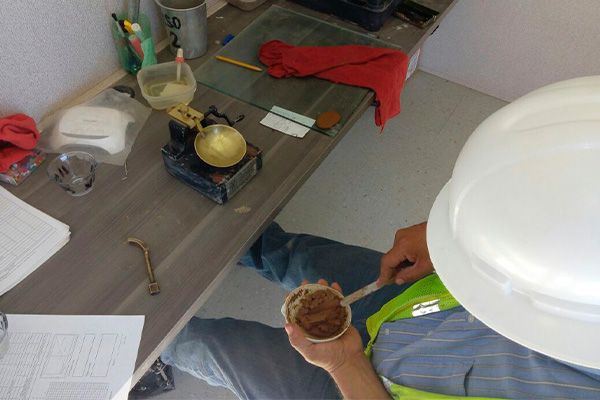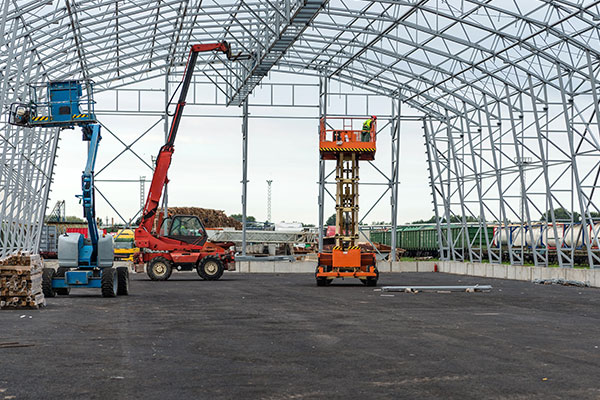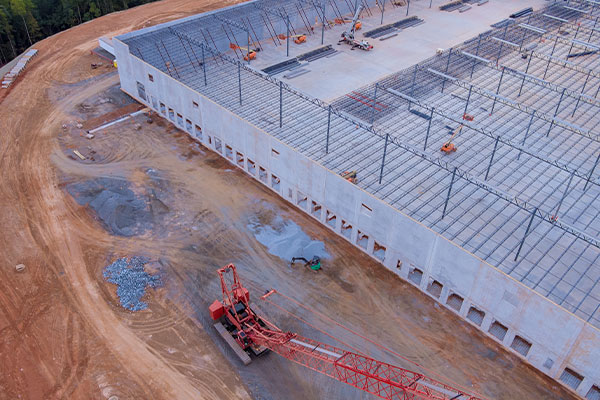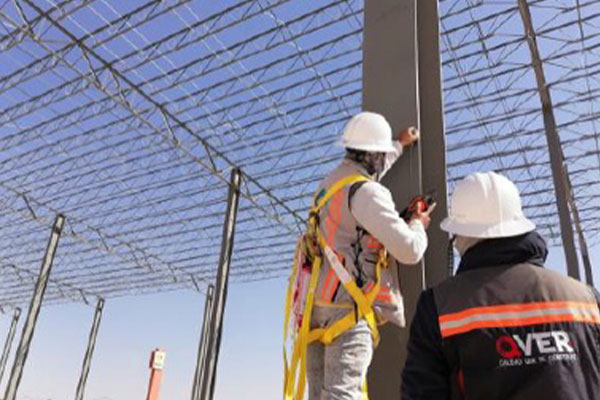As the process of constructing piles is essentially blind, those who carry it out quickly realized that pile integrity should not be underestimated.
Starting in the early 1960s, the discipline of pile integrity testing has made significant advances in both testing methods and their implementation worldwide.

Currently, pile integrity testing is characterized by:
Low interference and the cross hole ultrasonic method.
Compared to the overall development of equipment, the industry group has not yet agreed on the definition of test results and certification standards.
This often leads to unnecessary controversies and litigation among the parties involved. To prevent this from happening, each participant must accept the truth using terms created for our most common misunderstandings: Anomalies, Failures, and Defects.
The following sections illustrate these points supported by the examples presented.
DEFINITIONS.
Based on the technical paper «Single-Tube Ultrasonic Testing of Pile Integrity» written by Amir, which was published in the Proceedings of the ASCE Deep Foundation Congress 2002, the following definitions are intended to clarify the distinction between test results, the physical condition of piles, and any necessary actions, if any.
Anomaly in pile integrity
Discrepancies in test results that are not harmful. Inconsistencies may be due to material measurements (noise), average consumption (separation of pipe inputs), soil environment (changes in soil friction), or the mass itself.
It is the responsibility of the personnel and/or agency conducting the test to collect and analyze all relevant information to resolve any disputes.
Failure in pile integrity
Anything that deviates from the pile plan or configuration does not degrade pile performance
Defect in pile integrity
A defect, due to its size or location, may reduce the strength, durability, and/or performance of the unit.
Geothermal and structural engineers have a joint responsibility to determine if a particular malfunction is causing a defect.
Example:
In the Venn diagram, five areas affecting the reliability values of the group can be identified. The examples below illustrate each of these areas, along with actual research data from the data writers.
Anomaly that is not a failure
Nonlinear imbalances, also known as faults, include the use of two conditions: ultrasonic measurement through the rod orifice and one of the low voltage impact tests of a pile.
Anomaly that is a failure
An anomaly that is a failure includes «soft bottom» conditions, which occur when the bottom of a drilled well constructed with drilling support fluids is not properly cleaned.
The only method with which the soft bottom condition is detected and appears as an anomaly is the crosshole ultrasonic logging method (CSL). With the CSL method, a soft bottom condition manifests as a significant increase in the FAT with a corresponding decrease in the RE. Therefore, it is reasonable to report a soft bottom condition anomaly as a failure.
Failure that is not an anomaly and is not a defect A failure that is not an anomaly and is not a defect includes a minimum soil pocket in the pile which is, by definition, a failure.
However, due to its small size, the failure may go unnoticed even by current instruments with greater sensitivity, and therefore an anomaly may not be produced.
Fortunately, such a small failure does not affect the capacity or durability of the foundation elements, and therefore the failure is not a defect.
Anomaly that is a defect. Next, an example is described of a situation in which an anomaly is a defect (a true positive). From the results of a CSL test performed in a drilled well, a major anomaly was discovered at a depth between 1.8 m and 3 m, where the FAT increased from 190 μsec to a maximum of approximately 330 μsec, an increase of 74%. The attenuation increased 16dB, resulting in an energy decrease of 84%.As this feature was superficial and the groundwater level much deeper than the location of the anomaly, it was decided to excavate around the pile to expose the anomaly.
Upon excavating around the pile, visual observations confirmed the test results and the suspicion that the anomaly was actually a failure. And given its size and location, the failure was correctly classified as a defect.
Defect that is not an anomaly
A defect that is not an anomaly (a false negative) represents all actual defects that are not detected, such as:
“Soft bottom» conditions that were not detected by a low voltage impact method or thermal imaging.
Deviation from the vertical, which is not detected unless a dedicated system test is performed.
Large protrusions, which are not detected in the CSL test.
However, defects like the ones listed above could be detected by choosing the correct testing method.
DFI White Paper
An expert team was gathered to form the DFI Testing and Evaluation Committee and was led by Anna Sellountou, Ph.D., P.E., of Pile Dynamics, Inc. (PDI), to develop guidelines for evaluating and interpreting CSL test results.
Recently, the team completed a white paper entitled «Terminology and Evaluation Criteria for Crosshole Ultrasonic Logging in Deep Foundations.»
Based on extensive literature review and the team members’ experience, the document essentially adopts the definitions presented above, defines three levels of anomalies, and recommends the necessary actions for each case in an attempt to resolve the anomaly.
The white paper is currently under review and should be available later in the year
through DFI.




